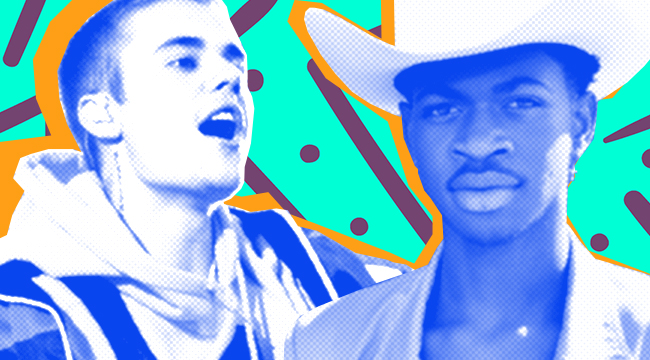
As Taylor Swift geared up to release the first single of her new era, fans had no idea what to expect — the very structured star was on a new label for the first time, and releasing an album outside her normal timing. When “ME!” arrived, it was a bubbly, frothy anthem centering self-love within a romantic relationship. The song was a sweet, pop-oriented new direction for the singer, who had just gone through a dark, hip-hop-leaning era. But there was something else different about the song, too.
Unlike any other lead single from a Swift album, this was the first-ever track to feature a guest artist, Brendan Urie of Panic! At The Disco. It’s not that Taylor had never collaborated with other artists before, she has plenty of times, it’s that the introduction to her next era involved sharing the stage with another artist. That was a totally different move for Swift, one of the best strategists in the industry.
The song came out in late April, and the strategy seemed to work — it debuted at No. 2 on the chart and has stuck around for the last three months, sitting pretty in the middle of the chart all summer. Swift’s decision to introduce her album with a de facto duet seemed to set the tone for a whole host of collaborative songs in pop music this summer.
Before we get any further, it’s worth noting the extremely obvious elephant in the room, Lil Nas X’s unprecedented success with “Old Town Road,” came on the heels of the song’s remix with Billy Ray Cyrus a few weeks earlier in April, and its popularity continues to be punctuated by real or imagined additional remix partners. For instance, this week’s new edition includes BTS member RM and has been dubbed “Seoul Town Road.”
When it comes to remixing songs that are already at the top of the chart, Billie Eilish’s camp tried that strategy recently, too, adding heartthrob superstar Justin Bieber to Billie’s own hit “Bad Guy” in what seemed like an obvious attempt to get it above “Old Town Road” on the chart for the coveted No. 1 slot. The original version has hovered at No. 2 for several weeks — and moved within the top five spots or so — in the last four months.
While including Justin didn’t seem to do much for Eilish’s hit, his star power certainly helped out Ed Sheeran on one of the indisputable songs of the summer, “I Don’t Care,” which served as the lead single for Sheeran’s completely guest-focused album, No. 6 Collaborations. Released in early May, the single is sitting at No. 3 on the chart, and has made its way as far up as No. 2. It’s a potential contender to unseat the long and powerful reign of “Old Town Road,” and another indication of how normalized two-artist-songs are becoming.
Even four or five years ago, it would’ve been strange for two of pop’s most massive stars to appear on the same track, but in 2019, their combined star power still can’t unseat a country-rap meme. Sheeran continued down this same track, enlisting both Camila Cabello and Cardi B for the star-packed, sexy salsa jam “South Of The Border,” and Cabello reunited with another collaborator, Shawn Mendes, on “Senorita,” a similarly steamy duet that debuted at No. 2 and stuck around at the No. 4 spot this month (Not to be confused with the excellent Vince Staples song of the same name).
Examining statistics on the increased number of collaborations between pop stars — who are sort of borrowing the feature spot tactic from hip-hop — would surely reveal an upswing, but you don’t even need graphs or data to notice the trend is on the rise. “When did every white pop star become DJ Khaled?,” a recent Rolling Stone article asked, perhaps forgetting that Timbaland was hosting similar posse cuts long before, and curators like Mark Ronson (who yes, is white) also worked in the milieu of including multiple artists on a single song, and continues to do so with great success.
It’s not something that Khaled invented, though he may have perfected the art of its commercial appeal, and now pop stars are employing the formula in an attempt to survive in an increasingly rap-centric world. Even more unlikely combinations like putting Sam Smith and Normani on a song together cracked the top 10 on the Billboard chart, proving that two artists will pretty much always be better than one.
Does this eventually lead to the layers-deep pop song with four or five artists? The success of something like Sheeran’s Cabello/Cardi collab will definitely help predict how the charts and audiences themselves will react to fusions of that nature, but taking a look at one simple stat does give some insight: Of the twenty slots in the Hot 100’s top twenty this week, nine of them are songs that include two artists. And with numbers like those, it becomes clear why even a song called “ME!” has another artist on the track.






